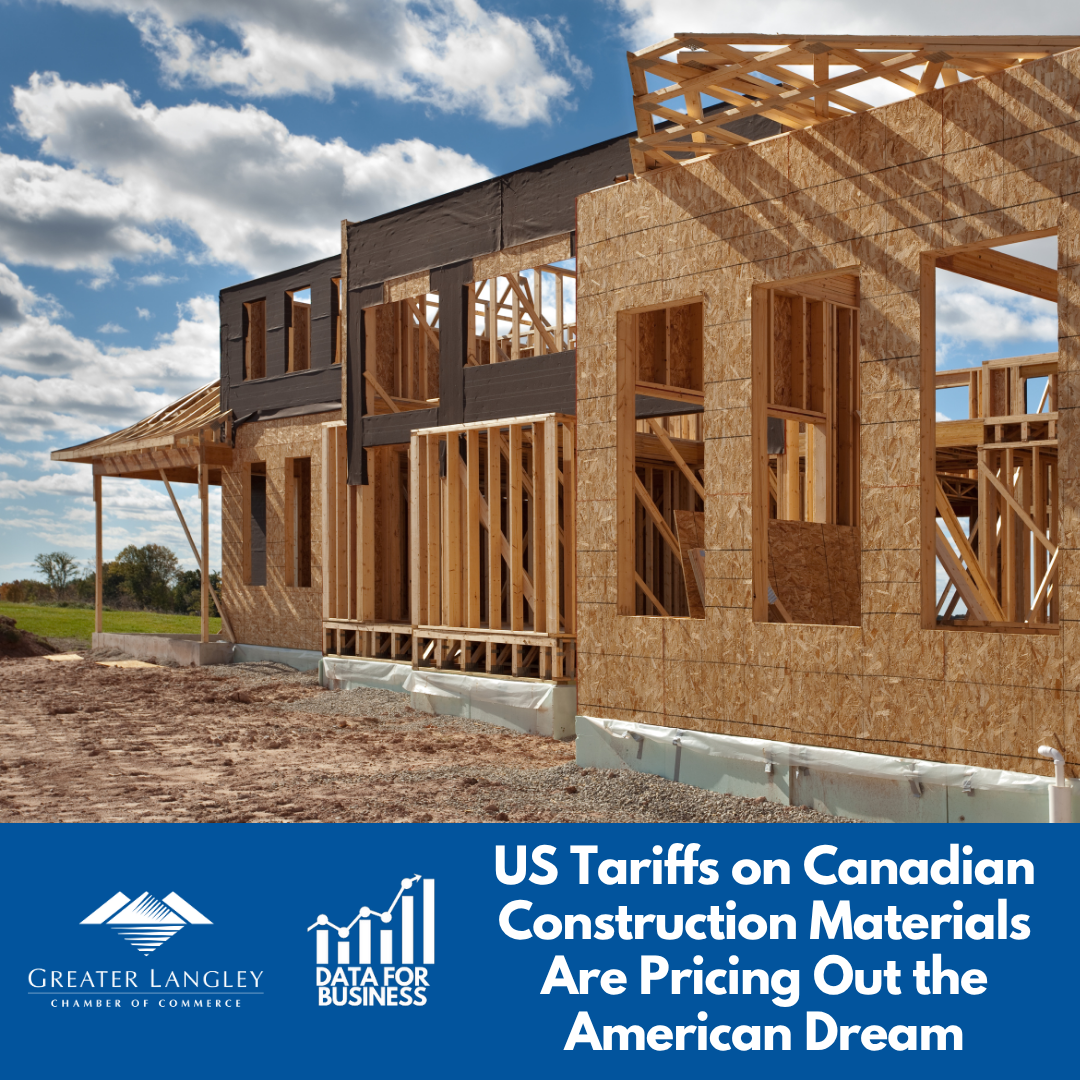Data for Business: US Tariffs on Canadian Construction Materials Are Pricing Out the American Dream
Data for Business: US Tariffs on Canadian Construction Materials Are Pricing Out the American Dream

‘Data for Business’ is an effort of the Langley Chamber, in partnership with the Canadian Chamber’s Business Data Lab, to bring our members reports, stats, and analysis on economic and business data to help inform business and investment decisions. Read our latest update below:
In light of the US government's recent 20.56% duties placed on Canadian lumber, the Langley Chamber is pleased to share a recent Business Data Lab study from the Canadian Chamber of Commerce analyzes how U.S. tariffs on Canadian-sourced construction materials—particularly lumber, steel, and copper—have already raised the cost of building a typical American home by USD 6,000 between 2018 and 2024, with a potential increase of up to USD 14,000 more by 2027 if current policies persist. Free and open trade benefits both countries, raising living standards and creating economic growth, and the ongoing trade dispute unnecessarily disrupts this.
Key Findings
- Heavy Canadian Inputs: In 2023, Canada supplied 69% of U.S. lumber imports, 25% of imported steel and iron, and 18% of refined copper—essential materials for new home construction and renovations.
- Cumulative Cost Impact: Tariffs already contributed a real uptick in building costs, estimated at 4.5% of the USD 134,000 overall increase in home prices between 2018–2024.
- Projected Burden by 2027: If tariffs remain, the total added cost per home could exceed USD 20,000, pricing out approximately 1.4 million prospective buyers, based on estimates from the National Association of Home Builders.
- Regional and Industry Effects: Builders, developers, and U.S. manufacturers reliant on Canadian inputs face mounting pressure—particularly in regions with limited domestic alternatives and high import dependency.
- Housing Affordability Crisis: At a time when U.S. home prices average over USD 510,000, and incomes have lagged, these added costs exacerbate affordability challenges across the country.
- Trade Policy Risks: The research warns that protectionist tariffs targeting one of the U.S.’s most integrated trading partners in construction materials may end up worsening economic outcomes for both countries.
- Economic Consequences: Economists estimate that broader tariffs—even modest ones—could reduce income and productivity in both countries by nearly 1%, with cumulative shocks reaching approximately USD 800 per person per year if retaliation ensues.
Takeaway
The interlinked U.S.–Canada construction supply chain has powered affordable housing—until now. New tariffs are seen as a costly burden on U.S. builders and homebuyers, not foreign exporters. At a time of historically tight housing markets and rising mortgage rates, the study underscores that aggressive tariff strategies risk undermining both housing affordability and economic collaboration in North America.
Learn more about the full analysis and data supporting this study on the Canadian Chamber’s Business Data Lab website here >
